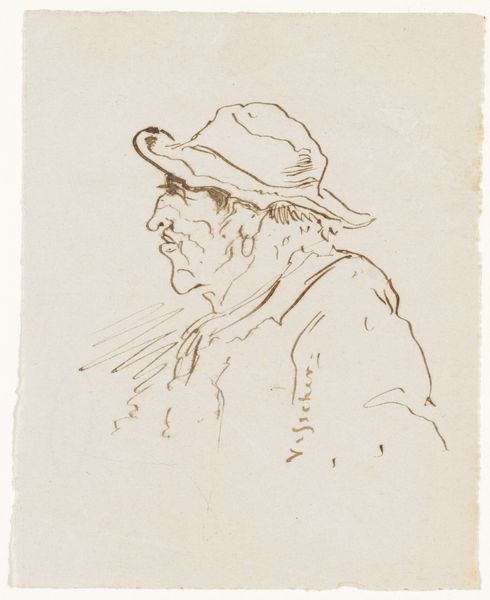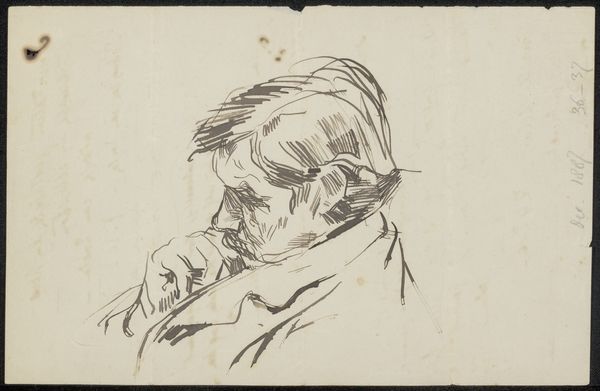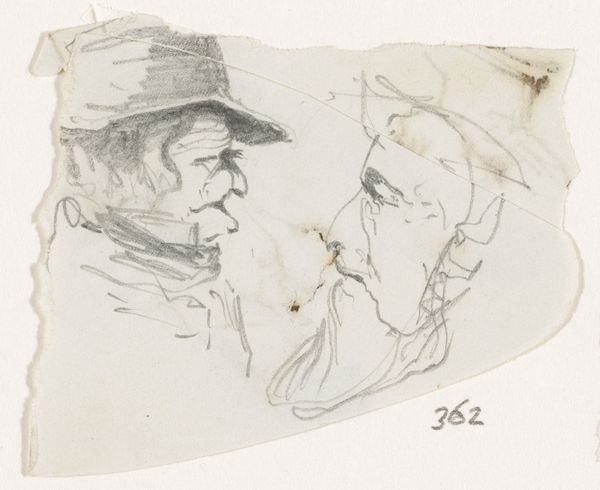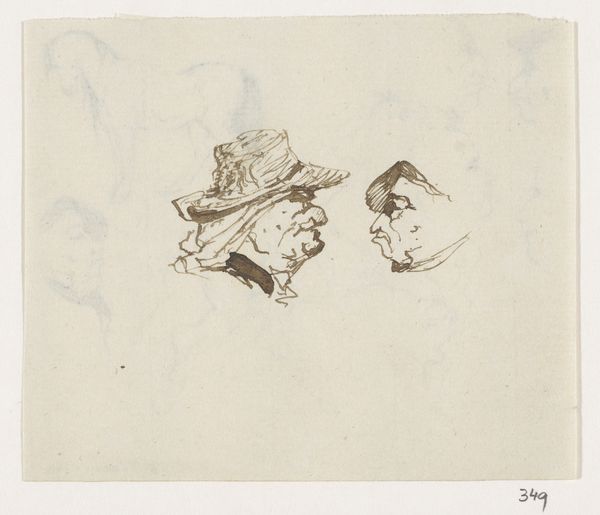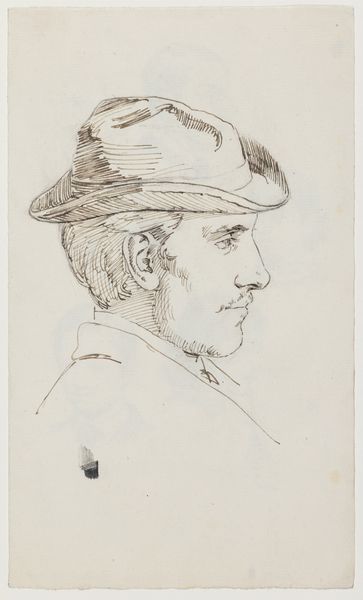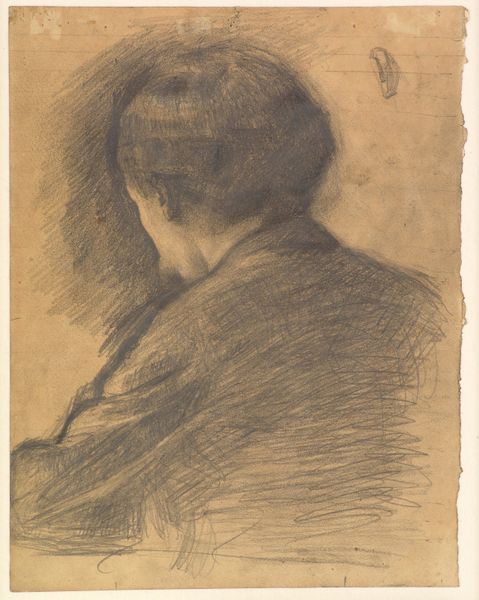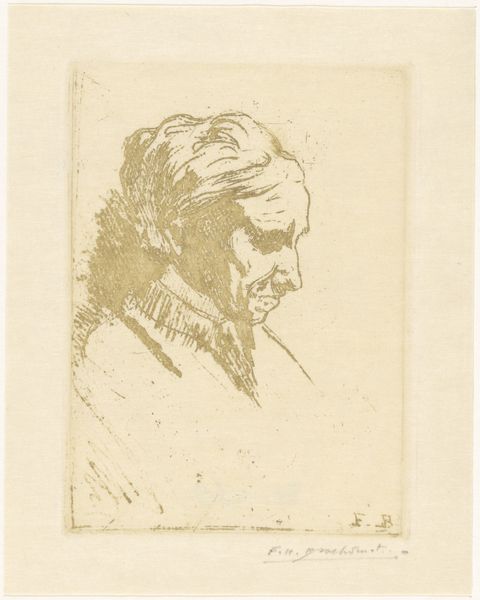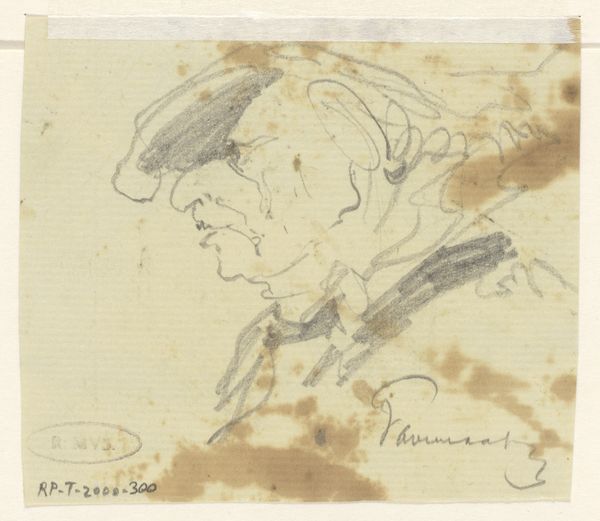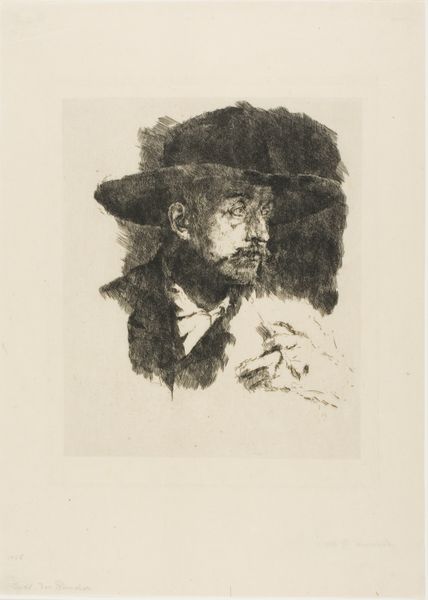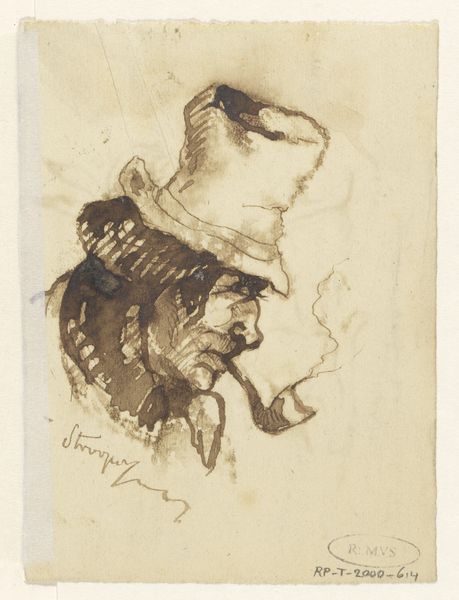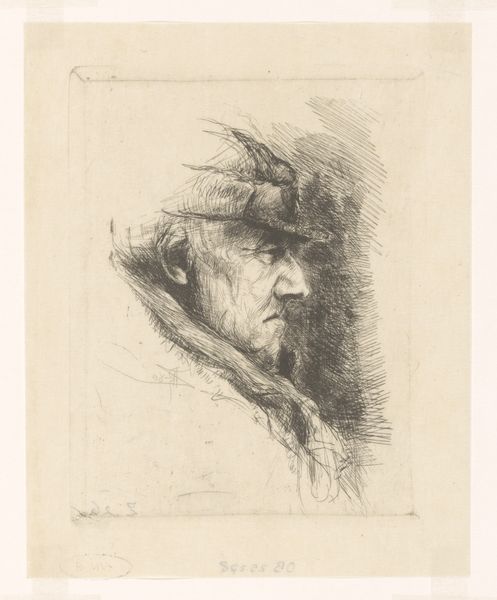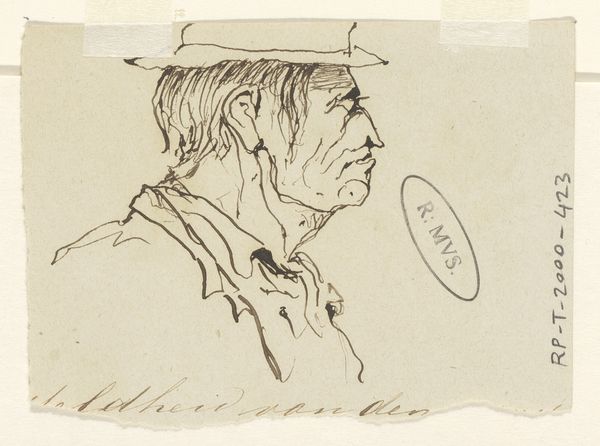
Dimensions: height 85 mm, width 110 mm
Copyright: Rijks Museum: Open Domain
Editor: This drawing, "Buste van man met pet" by Johannes Tavenraat, made sometime between 1840 and 1880, really strikes me. It has a rough, almost unfinished quality. It's stark, rendered in muted tones... How do you interpret this work, considering its historical context? Curator: Well, considering its time, and given the limited surviving biographical details of Tavenraat, this portrait presents a fascinating snapshot of emerging social portraiture. The direct, almost unflattering depiction breaks with earlier romanticized portrayals. What strikes me is how Tavenraat captures the sitter. Note how the cap almost blends into the background – What do you make of that choice? Editor: Hmm, maybe it suggests something about the man's social standing, or even Tavenraat's own view of his subject? That he saw the subject, first and foremost, not his position in society? Curator: Precisely! By not giving clear attention to the subject's fashion, Tavenraat creates a portrait of “a man," perhaps suggesting an interest in more democratic forms. And notice that in the social and artistic context of 1840-1880, with the rise of Realism, everyday individuals, not just nobility or the upper class, were deemed worthy subjects for artistic expression. Editor: I hadn’t considered the link to Realism in that way. That completely reshapes my understanding. It wasn't just a drawing but potentially a social commentary. Curator: Exactly. It demonstrates how artistic styles are never formed in isolation, reflecting shifts in power dynamics and social structures of the time. I learned more from discussing this drawing together. Thank you! Editor: Likewise. It's really opened my eyes to seeing beyond just the surface.
Comments
No comments
Be the first to comment and join the conversation on the ultimate creative platform.
